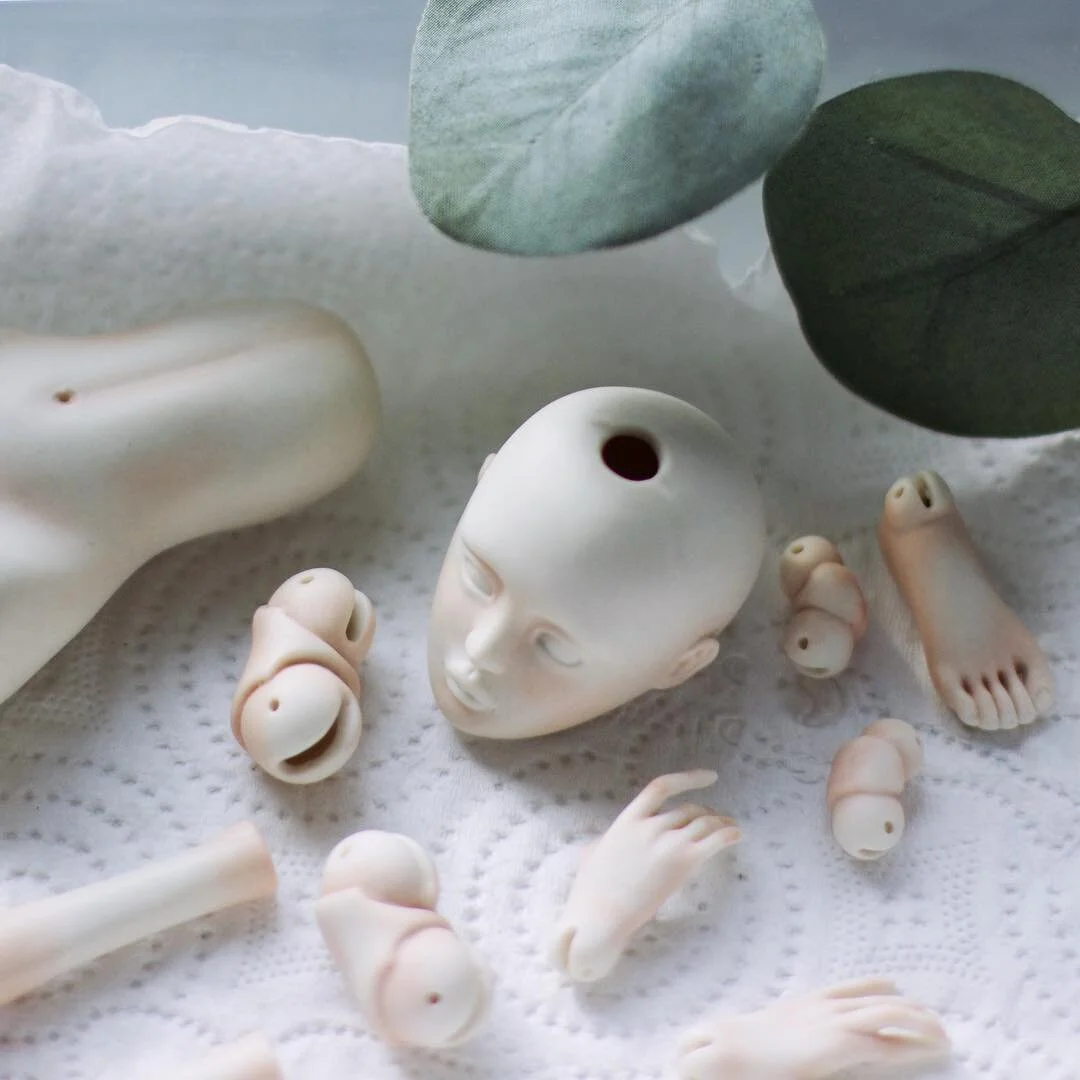A guide to painting porcelain dolls
Porcelain is such an interesting medium that even painting it can be incredibly fascinating. It involves many layers of China paints, fragrant oils, firing the paints in the kiln, and lots of patience. Today I want to talk more about China painting and explain how it works. Keep on reading if it captivates you as well!
Materials
To start with China painting, you’ll need:
China paints - overglaze paints that can be painted on glazed or unglazed surfaces. It comes in powder form, made from metallic and mineral oxides. Some of them contain lead, so precautions need to be taken when painting.
Medium oils - used to mix with China paints to create a paint-like substance. There are loads of different oils in the market with different thicknesses and drying times. Some are better for outlining, others for a general wash of color.
A pallete and a pallete knife - since the paint comes in powder form, you need to mix them with a medium oil to create the paint. A pallete and a pallete knife work great for that.
Kiln to fire your porcelain pieces - each layer of the paint has to be fired in the kiln to bind with porcelain.
Over the years, I settled on two websites to purchase all the China painting materials - marylandchina.com (located in the U.S.) and held-holland.com (located in the Netherlands).
Painting
The China paints are very translucent. To produce vivid colors, you’ll need to paint in layers, firing the paint after each coat. Sometimes, when painting faces for my porcelain dolls, I need up to 6-8 layers to create the result I want. Body blushing takes less - and I’m happy with the result after ~3 layers already.
To start, plan what parts you’ll be painting first and mix the colors you’ll be using. Don’t mix too much paint - when the oil dries you won’t be able to reuse them. Mix just enough for one painting session.
I’ll continue detailing the face with 5th and 6th layer.
Don’t use too much paint - build up the color in thin layers. Sometimes if you apply too much paint at once, it can create shiny patches or blister when fired. All the thin layers bond with porcelain on the molecular level, so the paint never sits on top. It melts into the porcelain creating that signature look.
Finished result
Firing China paints
Trial and error will be necessary to achieve the best results. Test out all the China paints before you start painting dolls. For that, get a glazed tile and paint it with the China paints you own. You’ll see how the different colors react to the temperatures, which ones require more layers, etc.
Photo by: maryloulaberge.com
Because all the paints react to the temperatures differently, there are no exact temperatures to give. The range of firing China paints is usually 600°C - 852°C (1112°F - 1566°F). Reds require lower temperatures than other colors. If a color is fired too hot, it will fade more in the kiln. Sometimes it can form glossy patches, so you need to test each color before painting your doll.
Fire your pieces only when the paint has dried completely. China paints can be very fickle, so you need to fire them slowly and don’t overcrowd the kiln to ensure sufficient airflow. I have an electric kiln and use a program that increases temperature by 120°C every hour until it reaches 600°C, then fires quickly to reach the final temperature. It works great for me, and the firing takes a little bit more than 5 hours.
First layer body blushing.
Tips
Here are some tips that help to ensure good results with China paints.
Always test China paints before painting your dolls.
Overfiring and underfiring are the two most common problems using China paints. Rough, dull colors mean underfiring. Lost, faded colors or glossy patches can be the result of overfiring.
Don’t overcrowd a kiln because oils won’t have enough airflow to sufficiently burn out. This can result in unwanted spots and specs that will ruin your doll.
Paint in thin layers and don’t use too much paint. Build color by a lot of layering instead.
Clean your brushes using turpentine and wash them later with soap.
As with any new material, the China painting involves a lot of experimentation until you perfect this technique. That’s why there are no exact temperatures, timings, and hard rules. You have to find your own path using these guidelines. Let me know if you have any questions, and share your tips in the comments a well!








